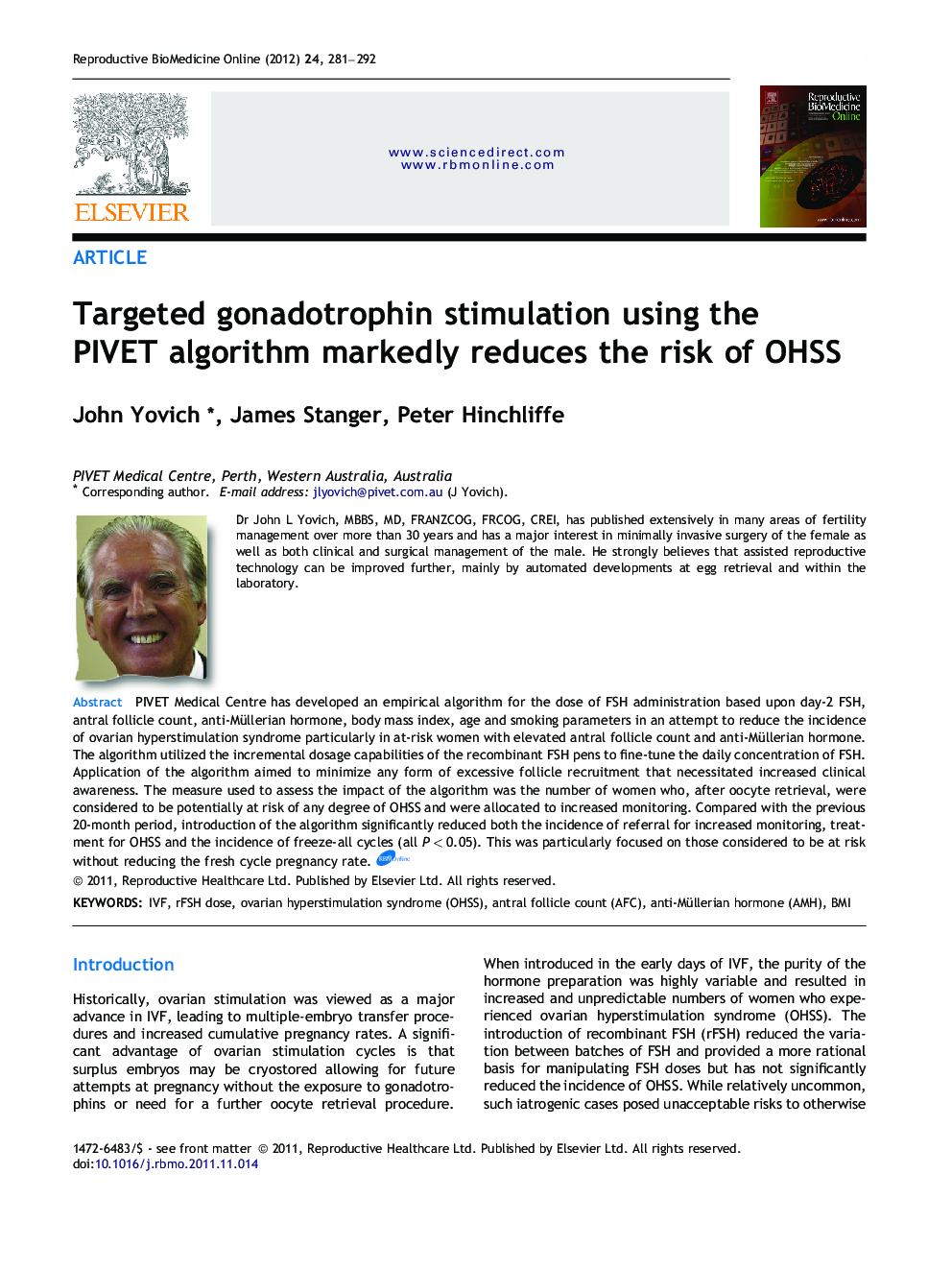| Article ID | Journal | Published Year | Pages | File Type |
|---|---|---|---|---|
| 3971048 | Reproductive BioMedicine Online | 2012 | 12 Pages |
PIVET Medical Centre has developed an empirical algorithm for the dose of FSH administration based upon day-2 FSH, antral follicle count, anti-Müllerian hormone, body mass index, age and smoking parameters in an attempt to reduce the incidence of ovarian hyperstimulation syndrome particularly in at-risk women with elevated antral follicle count and anti-Müllerian hormone. The algorithm utilized the incremental dosage capabilities of the recombinant FSH pens to fine-tune the daily concentration of FSH. Application of the algorithm aimed to minimize any form of excessive follicle recruitment that necessitated increased clinical awareness. The measure used to assess the impact of the algorithm was the number of women who, after oocyte retrieval, were considered to be potentially at risk of any degree of OHSS and were allocated to increased monitoring. Compared with the previous 20-month period, introduction of the algorithm significantly reduced both the incidence of referral for increased monitoring, treatment for OHSS and the incidence of freeze-all cycles (all P < 0.05). This was particularly focused on those considered to be at risk without reducing the fresh cycle pregnancy rate.Women with an elevated antral follicle count are at risk of ovarian hyperstimulation syndrome (OHSS) following gonadotrophin stimulation for IVF. This study developed an FSH dosage algorithm based upon several risk factors and targeting women with the potential for OHSS so that the dose of hormone could be minimized. This significantly reduced the need for increased monitoring and incidence of treatment for OHSS, as well as reducing the treatment cycles where all the embryos were frozen. These benefits were achieved without diminishing the pregnancy rate.
